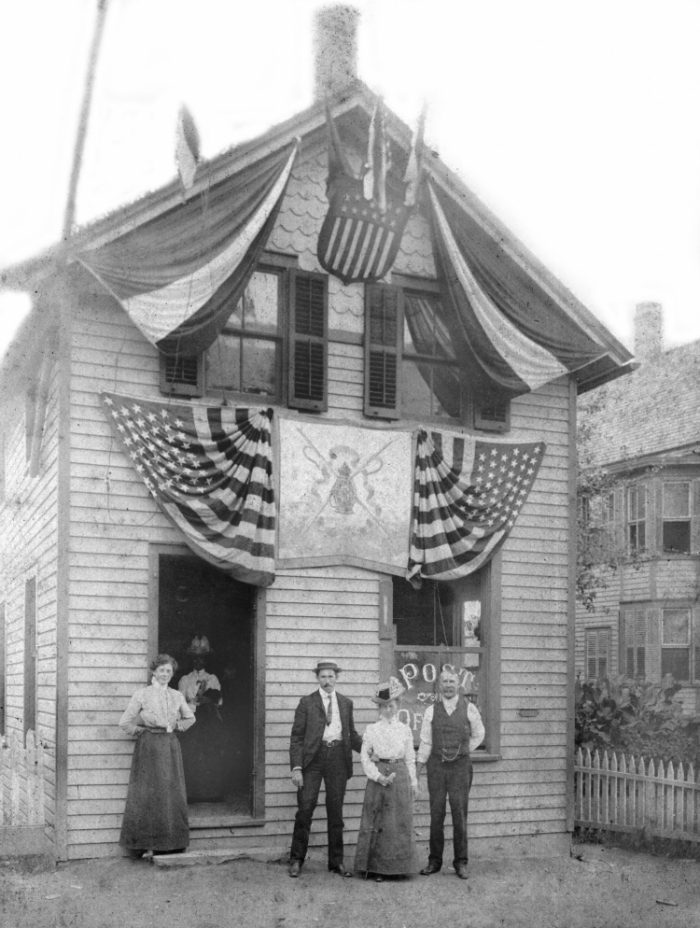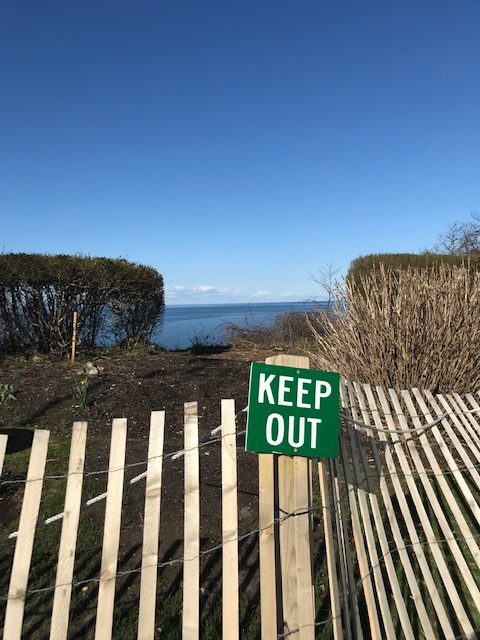Port Jefferson’s first post office, known as “Satucket,” was established in 1801 with Zachariah Hawkins as its postmaster.
About 1806-7, Hawkins moved from Setauket to Port Jefferson, settling near the southeast corner of Myrtle Avenue and Main Street in a building that was to be his house and store, as well as the post office. The site is now occupied by Infant Jesus Roman Catholic Church. By 1811, the “Satucket” post office had been renamed “Drown Meadow.”
Archival records do not indicate where the village’s post office was located when Port Jefferson’s second postmaster, dock owner and merchant James R. Davis, held the position, but “Drown Meadow” was changed to “Port Jefferson” in 1836 during his tenure.
The site of the post office is also not identified in government files relating to the administration of the village’s third postmaster, shipbuilder John R. Mather, but during the early 1800s post offices often operated out of local businesses and private homes.
With the 1845 appointment of Henry K. Townsend as the village’s fourth postmaster, Port Jefferson’s post office was based in the Townsend House at Hotel Square, the intersection of today’s Main and East Main streets.

After being named postmaster in 1861, Holmes W. Swezey established a post office in his Main Street drugstore, today the home of Billie’s 1890 Saloon.
When Civil War veteran George W. Kinner became postmaster in 1866, he set up headquarters in a small building approximately where Kate and Hale’s clothing store now stands at 227 Main St., but later worked out of the front room of his Main Street home near Wynne Lane.
Following Sidney S. Norton’s appointment as Port Jefferson’s eighth postmaster, the post office opened in a building at a site currently occupied by The Pie pizzeria at 216 Main St., remaining there through a series of postmasters.
In December 1911, during John M. Brown’s term as postmaster, the village’s post office began operations on the ground level of the brick, brand-new Port Jefferson Post Office Building, now Regency Condo at 202 Main St.
After a ferocious fire gutted the Post Office Building in winter 1948, postmaster John J. Cassidy established emergency quarters in the Odd Fellows Hall on East Main Street. The post office then moved to American Legion Wilson Ritch Post on East Main Street, remaining there until summer 1948 when it returned to its old location at 202 Main.
Under the supervision of postmaster Donald W. Floyd, the present Port Jefferson post office opened on Nov. 29, 1965, in the Sil-Flo Building at 407 E. Main St., one of a succession of locations in downtown Port Jefferson that have ably served customers for over 200 years.
Kenneth Brady has served as the Port Jefferson Village Historian and president of the Port Jefferson Conservancy, as well as on the boards of the Suffolk County Historical Society, Greater Port Jefferson Arts Council and Port Jefferson Historical Society. He is a longtime resident of Port Jefferson.

































